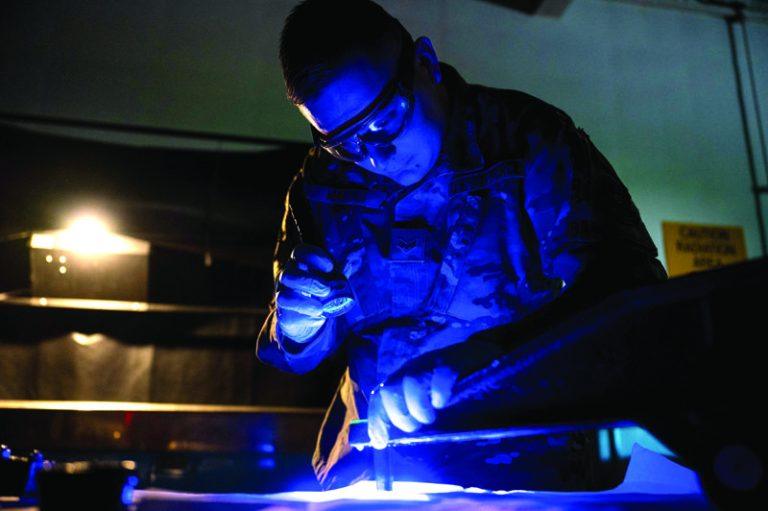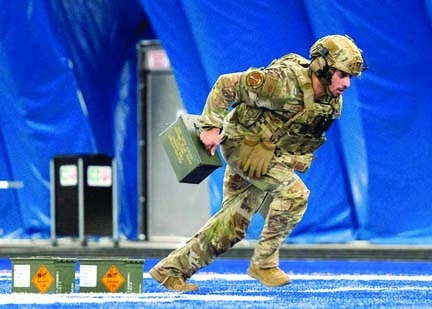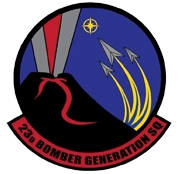MINOT AIR FORCE BASE, N.D. —
Working tirelessly 24 hours a day, seven days a week, a dedicated team of Airmen strive to guarantee there are no defects in the 5th Bomb Wing’s fleet of B-52H Stratofortress. This team is known as the Non-Destructive Inspection unit, a crucial component of the 5th Maintenance Squadron, where technology meets precision to keep the aircraft flying safely.
Senior Airman Jonathan Macias, 5 MXS NDI journeyman, shared insight into his role and the critical nature of the unit’s mission. He said the work is intricate and requires a high degree of attention to detail. He stressed that his job is essential for maintaining the safety and readiness of the aircraft.

“Our job is to find defects and discontinuities in aircraft parts, and relay those findings to the crew chiefs,” said Macias. “For instance, we analyze oil samples from jet engines to determine if the engine is healthy or needs an overhaul.”
The NDI unit has six different inspection methods including fluorescent penetrant, magnetic particles, x-ray, ultrasound, oil analysis and eddy current. Macias described how the process of x-raying is akin to medical imaging, but on a much larger scale.
“Normally, when you think of taking x-rays, you picture going to the doctor and looking at a set of bones,” said Macias. “Here we’re doing the same thing but looking at the ribs and spars of an aircraft instead. It’s all about finding cracks or defects and ensuring everything is in top condition.”
Each airframe presents unique challenges. Adapting to these challenges is a significant part of the job, noted Macias. He says learning the jet, understanding how it operates, and what makes it tick is key to successful maintenance. The B-52H, which the NDI unit here predominantly works on, poses specific logistical challenges due to its size and complexity.
“This aircraft is not like any other, with eight engines and a lot of extra maintenance, it’s a labor of love,” said Macias. “The biggest challenge is its sheer size, which requires extensive logistical planning to perform inspections.”
Despite the challenges, Macias finds that producing reliable results that keep aircraft flying is immensely satisfying. Macias compared finding defects to snowflakes; no two cracks are the same and every one is unique.
NDI’s ability to detect issues using various inspection methods is key to safeguarding Minot’s personnel and equipment. These Airmen, through their meticulous work, ensure the 5th Bomb Wing’s aircraft maintain high levels of safety and readiness, contributing significantly to overall mission success.

U.S. Air Force photo I Airman 1st Class Luis Gomez













